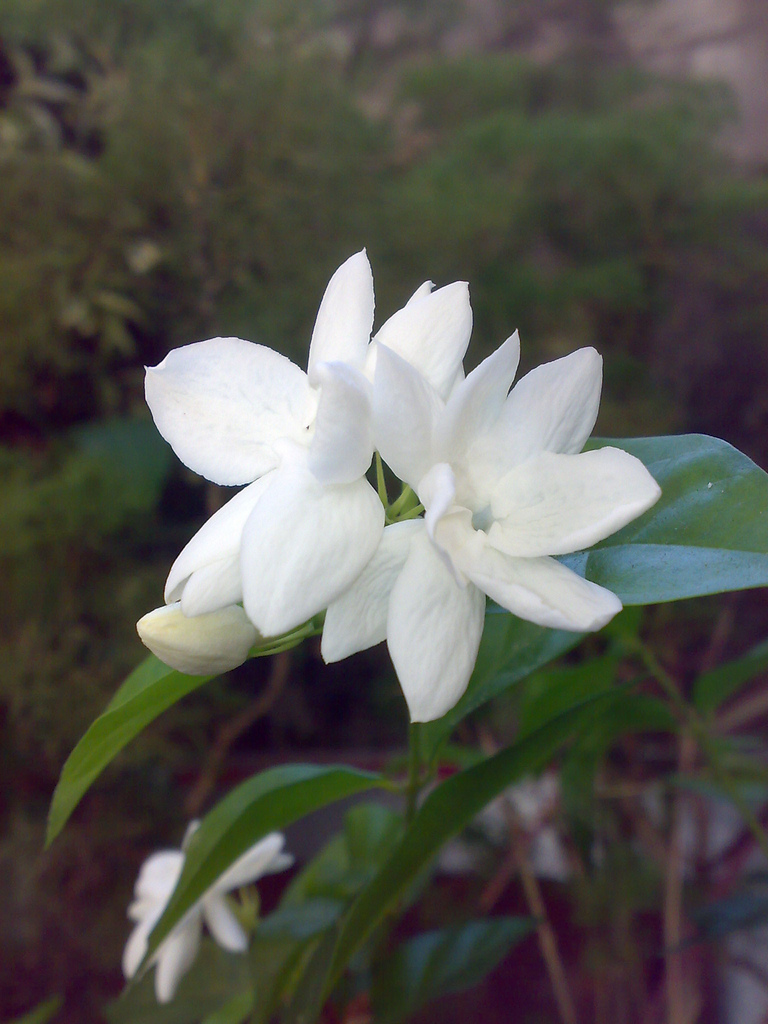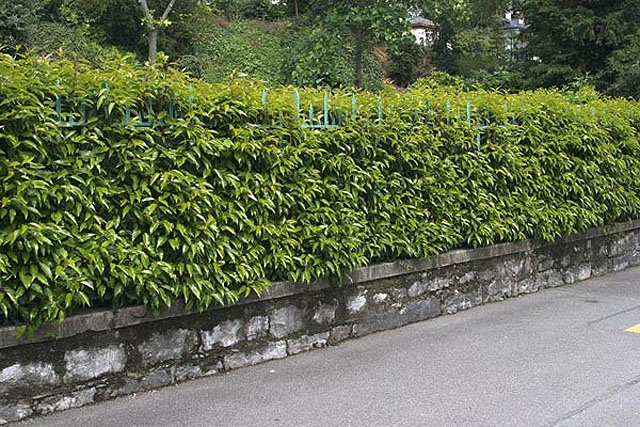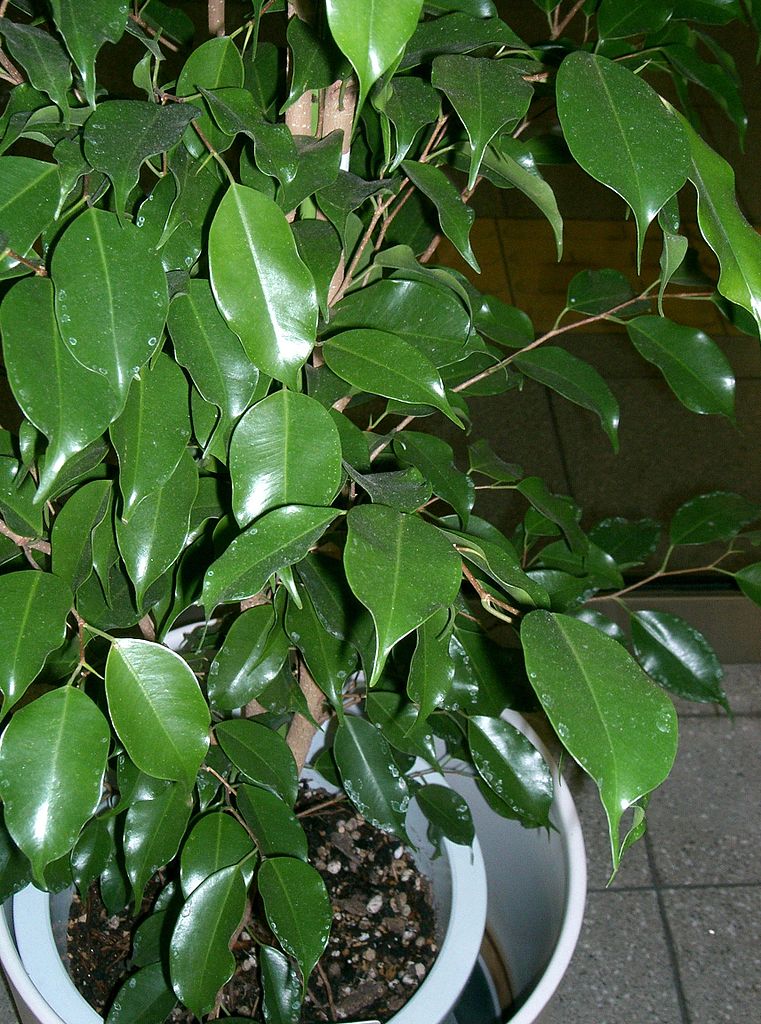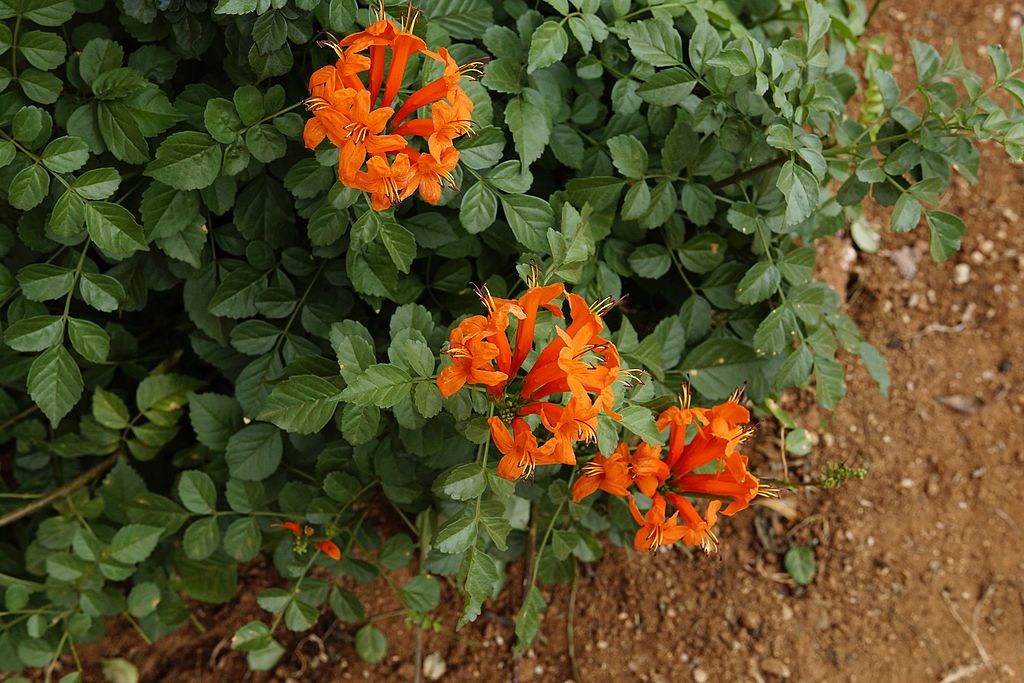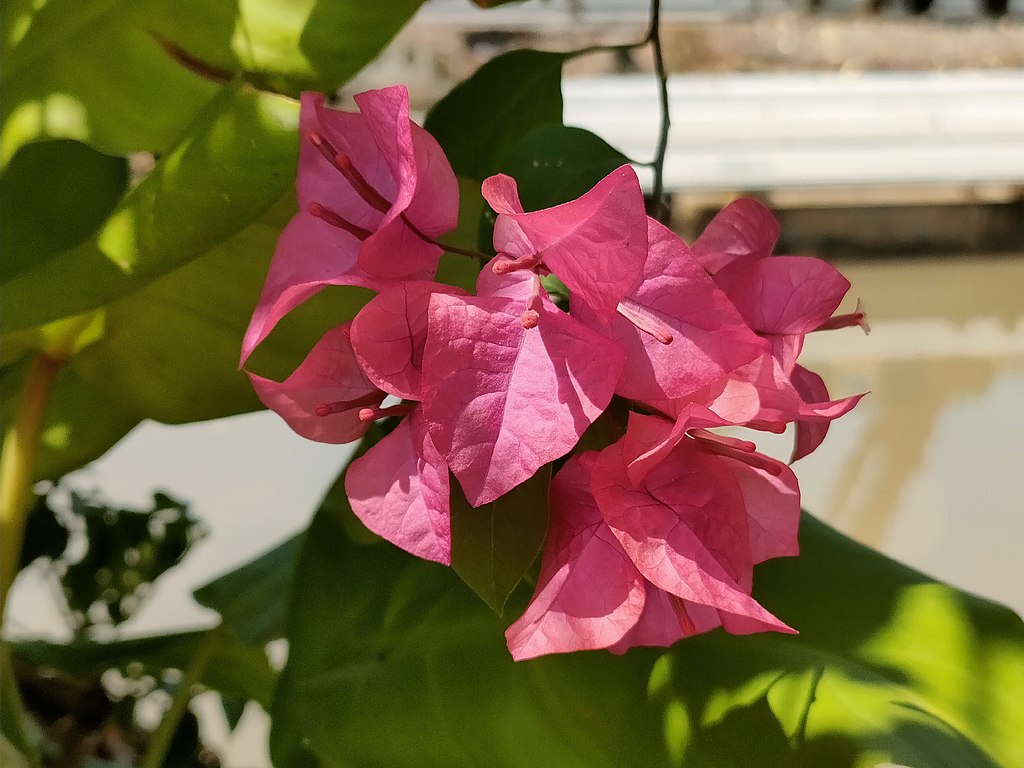Jasminum sambac (Arabian Jasmine or Sambac jasmine) is a twining or scrambling evergreen shrub with glossy dark green leaves and famous for its exceptionally fragrant waxy pure-white flowers, that fade to pink as they mature.
These fragrant blooms appear all summer long and may continue to bloom year-round in warm climates.
Arabian jasmine plant is a native of Southeast Asia. Known botanically as Jasminum sambac. It is the national plant of the Philippines (known as Sampaguita) and one of the three national plants of Indonesia (named Melati Putih)! The floral aroma is used in China to scent jasmine tea, and jasmine flowers adorn leis in the Hawaiian islands, where it is named as Pikake.
Without support, it grows as a mounding and trailing shrub. But if support is provided, it can also twine to form a shrubby, upward-growing vine.
The stems of the plant are downy and hold large, oval leaves that can reach 10 centimeters in length.
Jasmine flowers develop in cymes or clusters of 3-12 small blooms. Each flower is about 3 centimeters across and waxy in appearance. While white when new, these lovely strongly-scented flowers turn light pink as they mature, then yellowish-brown when they wane.
Arabian Jasmine grows up to 1.8-3.0 meters tall and wide.
How to grow Jasminum sambac (Arabian jasmine) outdoors and indoors
Maintaining Arabian jasmine is quite easy.
Like other tropical plants, the Arabian jasmine requires warm temperatures, lots of sunshine, and high humidity levels.
Pruning is minimal and usually only needed to maintain the desired shape.
Grow this plant in pots if winter in your area is colder than this tropical plant can handle. Growing in pots, you can move the pots indoors when there is chilly outside.
Light
Jasminum sambac (Arabian jasmine) plants need full to partial sun. The ideal light condition is 6 to 8 hours of sunlight during the day.
When you grow this plant in pots indoors, make sure to place it in a very sunny window.
Soil
Loose, light, humusy soil is ideal for the Arabian jasmine (Jasminum sambac) plant.
Soil should be well-draining but hold water well.
Richer soils with lots of compost will make your Jasminum sambac happy!
Your soil pH should be between 4.9 and 7.5, with an optimum range of 5.5 to 6.0.
If the soil’s pH is over 6.5, iron in the soil is less available to the jasmine.
Water
Jasminum sambac (Arabian jasmine) requires plenty of water, especially during the summer season.
Water this plant regularly to keep the soil moist, though not wet. Avoid soggy soil.
When the first 5 to 7 centimeters of soil feels dry to the touch, water thoroughly.
It is best to reduce this plant’s water during the winter.
Temperature H3
Jasminum sambac (Arabian jasmine) thrives in warm, tropical climates, because it is a tropical plant.
They are very susceptible to frost and cannot handle cold temperatures.
When planting Jasminum sambac (Arabian jasmine), select a location where it can receive full sun to partial shade.
Throughout the growing season, ideal temperatures for flowering are 27 to 32 degrees Celsius during the day and 21 to 27 degrees Celsius at night.
It can tolerate cooler temperatures, but it doesn’t handle frost conditions well.
Fertilizer
Do not apply fertilizer when you first plant your Arabian jasmine (Jasminum sambac) plant. First allow the plant to become established where you have planted it.
A 10-30-10 fertilizer is recommended for jasmine flower production. Use a slow-release granular form and spread it evenly under the plant.
Fertilize your outdoor jasmine plant four times during the year. Once will be right after its late-winter pruning. Three more feedings should be evenly spaced during the spring, summer, and fall months.
Pruning
Jasminum sambac (Arabian jasmine) does not require extensive pruning.
Proper trimming will ensure a beautiful, healthy plant.
For areas where the Jasminum sambac blooms year-round, simply prune the plant to maintain its desired shape.
In areas where this plant ceases blooming during the winter season, trim away all dead branches and blooms above their nodes in the beginning of winter.
This will ensure healthy new growth for the coming growing season.
Identify and treat problems with Jasminum sambac (Arabian jasmine)
Pests
Jasminum sambac (Arabian jasmine) it is virtually pest free.
Keep your mind on aphids, spider mites and mealybugs.
Fungus
Avoid excessive watering to prevent fungal root rots. Water at the plant’s base to prevent leaf spot.
No flowers or not enough flowers
If you’ve found your garden Jasminum sambac (Arabian jasmine) isn’t producing flowers, you’re probably not giving it enough light. Move it to a brighter location.
Jasminum sambac (Arabian jasmine) lose its leaves in winter
Typically in cooler weather, Jasminum sambac (Arabian jasmine) plants drop their leaves.
Greek name: Φούλι.
Sources: https://www.gardenia.net/plant/jasminum-sambac-arabian-jasmine, https://www.thespruce.com/arabian-jasmine-guide-5190635, https://www.epicgardening.com/arabian-jasmine-plant/, https://www.valentine.gr/jasminum_sambac_gr.php
Tags: ORNAMENTAL PLANTS

